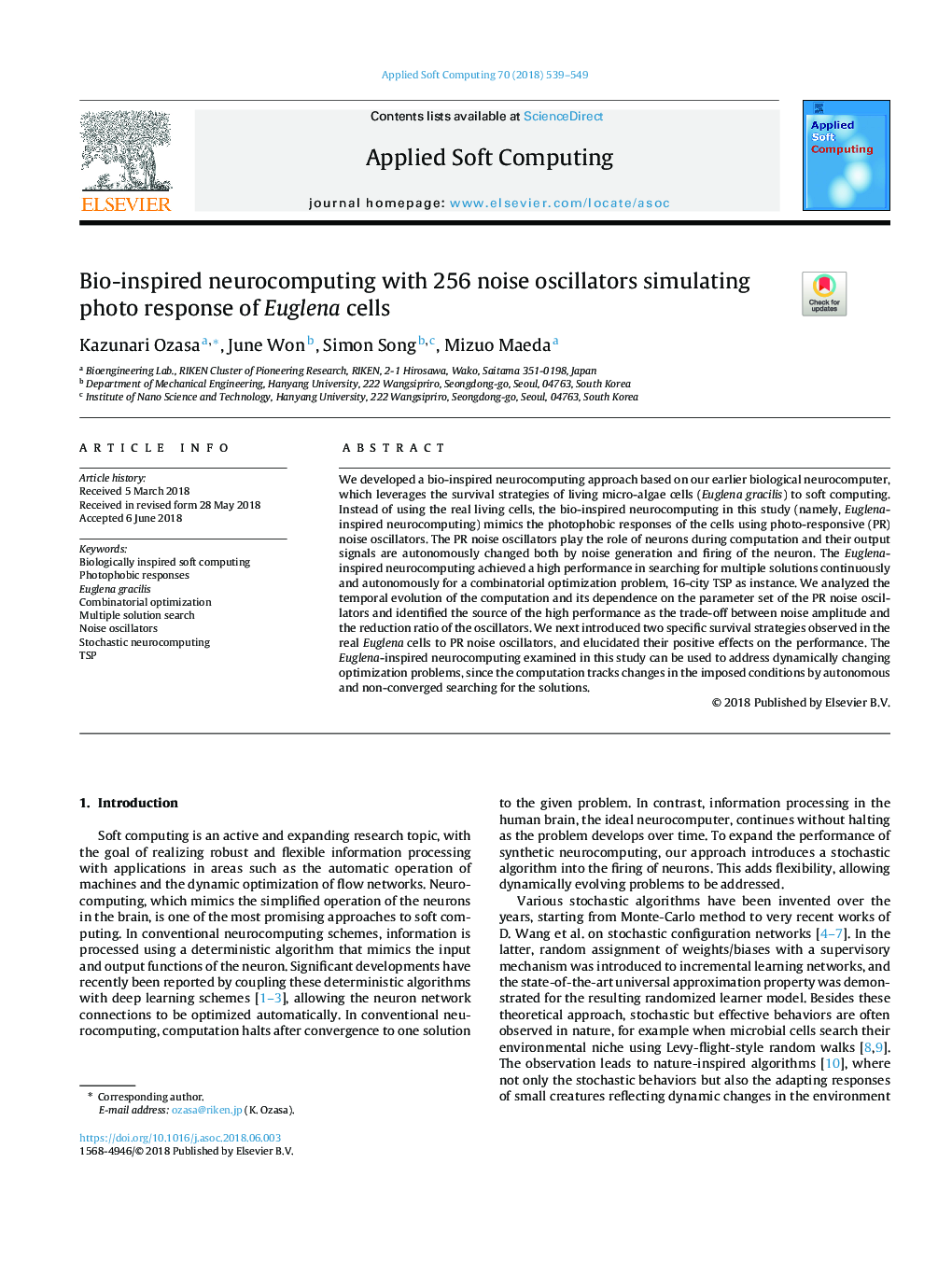| Article ID | Journal | Published Year | Pages | File Type |
|---|---|---|---|---|
| 6903403 | Applied Soft Computing | 2018 | 11 Pages |
Abstract
We developed a bio-inspired neurocomputing approach based on our earlier biological neurocomputer, which leverages the survival strategies of living micro-algae cells (Euglena gracilis) to soft computing. Instead of using the real living cells, the bio-inspired neurocomputing in this study (namely, Euglena-inspired neurocomputing) mimics the photophobic responses of the cells using photo-responsive (PR) noise oscillators. The PR noise oscillators play the role of neurons during computation and their output signals are autonomously changed both by noise generation and firing of the neuron. The Euglena-inspired neurocomputing achieved a high performance in searching for multiple solutions continuously and autonomously for a combinatorial optimization problem, 16-city TSP as instance. We analyzed the temporal evolution of the computation and its dependence on the parameter set of the PR noise oscillators and identified the source of the high performance as the trade-off between noise amplitude and the reduction ratio of the oscillators. We next introduced two specific survival strategies observed in the real Euglena cells to PR noise oscillators, and elucidated their positive effects on the performance. The Euglena-inspired neurocomputing examined in this study can be used to address dynamically changing optimization problems, since the computation tracks changes in the imposed conditions by autonomous and non-converged searching for the solutions.
Related Topics
Physical Sciences and Engineering
Computer Science
Computer Science Applications
Authors
Kazunari Ozasa, June Won, Simon Song, Mizuo Maeda,
